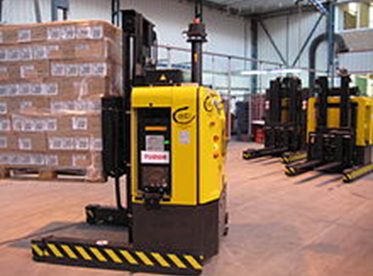Holste Says... |
 |
| By leveraging the capabilities of the WMS and/or WCS to including both primary and secondary sorting functions, the shipper can enjoy the benefits of automation and the flexibility of manual processing in a mutually exclusive, but still integrated, system configuration. |
 |
What do you say? |
 |
| Click here to send us your comments |
|
|
|
For example:
- Item Picking – is for the most part a manual operation. However, when augmented with automated product-to-person systems such as horizontal and/or vertical carousals, and when equipped with hands free computer directed voice technology, the labor component can be optimized. Another approach is to integrate picking carts that are equipped this GPS or perhaps consider deploying robots specifically designed for item picking.
- Value Added Services – like ticketing and customized packaging may need to be processed offline through a more “hands-on” manual process. In other words, program the automated shipping sortation system to recognize customer orders that require “special handling” and sort them to a workstation that is configured to efficiently process them. Once the special handling process is completed, the orders can be transferred back into the handling system.
- Repetitive Operations – such as building mixed case and rainbow pallet loads using robots can provide significant labor saving advantages over manual palletizing methods.
- Non-repetitive Operations - especially those requiring a high degree of customization should be processed in a subsystem that integrates manual operations with the appropriate level of automation. In this way, the need for operational flexibility, adaptability, and scalability can be insured.
A word of caution:
 Shippers are being advised that AGVs (Automated Guided Vehicles) or driverless pallet jacks (pictured on right) are the best choice for increasing efficiency and productivity in the warehouse. However, devising a formula for ROI is often difficult, even impossible when considering the potentially huge swings in seasonal volume. While industry service providers argue in favor of the efficiency of the technology, business managers are more interested in solutions that best serve their specific requirements. When you consider that more than 80% of all DCs have <100,000 square feet of space, a few pallet dollies and forklifts often prove far more cost effective than retooling a warehouse facility with tape, lasers, or unmanned vehicles to move pallet loads to the dock. Shippers are being advised that AGVs (Automated Guided Vehicles) or driverless pallet jacks (pictured on right) are the best choice for increasing efficiency and productivity in the warehouse. However, devising a formula for ROI is often difficult, even impossible when considering the potentially huge swings in seasonal volume. While industry service providers argue in favor of the efficiency of the technology, business managers are more interested in solutions that best serve their specific requirements. When you consider that more than 80% of all DCs have <100,000 square feet of space, a few pallet dollies and forklifts often prove far more cost effective than retooling a warehouse facility with tape, lasers, or unmanned vehicles to move pallet loads to the dock.
By leveraging the capabilities of the WMS and/or WCS to including both primary and secondary sorting functions, the shipper can enjoy the benefits of automation and the flexibility of manual processing in a mutually exclusive, but still integrated, system configuration.
Final Thoughts
The principle advantages of material handling automation are related to improving operational efficiency, throughput capacity, and accuracy of repetitive functions. As such, automation should not necessarily be perceived as the “ideal solution” for all of the unique processing requirements encountered in the typical DC. However, enhancing manual operations with appropriate levels of automation can often increase productivity and workplace safety.
Any reaction to this Expert Insight column? Send below.
Your Comments/Feedback
|